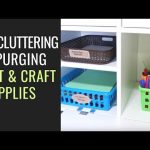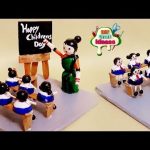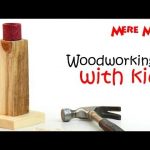Having good equipment is very important for those who either enjoy sewing for leisure or those who routinely sew. There are many items around that can name life easier but there are definitely some that are more useful than others. Read through the top items recommended for every sewing kit and why.
Thread
Thread is a definite non-negotiable item. Without it, you won’t get much sewing done. It’s ideal to have thread in a good variety of colours, and especially black and white as they can prove useful if you don’t get an exact colour match. Keeping your thread organised and not letting the ends just hang loose so they get tangled up with each other is essential. There is nothing worse than having to unravel loads of different threads before you get started. So, keep a good range of colours, keep them altogether and keep the ends tucked out the way neatly!
Needles
As important as the thread, needles are a must for every sewing kit. Although machines often do the majority of the work as they are faster and produce a neater finish, needles can be useful you those tricky, smaller areas. Ensuring you have a good selection of needles, a few bigger and smaller ones with different eye sizes. Often sewing boxes have pin cushions, which are useful to store the needles in. Of course when bought in sets they often have quite nice packaging that can be good to store them in too.
Seams rippers
Although you can sometimes get around unpicking old stitching with needles, it is much easier to use a seam ripper and you’re much less likely to prick your fingers! Really, one of these should suffice, however they do have some smaller and larger ones so you may wish to have a few. Useful for unpicking an old seam or if you make a mistake and need to undo some stitches.
Pins or wonder clips
Both work in exactly the same way, holding fabric together that it yet to be sewn. Pins are more traditionally used however wonder clips are much easier, don’t get in the way as much and don’t cause you to prick your fingers while you are sewing. Plus they are much easier to take off once the job is done. That said, without either of these items, trying to hold material in place is pretty tricky, and you’d be unlikely to get a nice straight finish without having the material held in place! You want a good amount of these, at least twenty, for holding longer pieces of material.
A sewing machine with a working foot
These days, sewing machines are much lighter, fancier and easier to use than ever before. Having the working foot is also very useful, as it allows more control over the machine and frees your hands to guide the materials. You don’t have to spend loads of money on one either! Yes, you can survive without one, but the speed and quality of the stitching you get with a machine is much better. You’ll feel more confident undertaking bigger projects with a machine such as clothes making.
Fabric scissors
Scissors in general for cutting material are again essential. However, it is worth buying a pair specifically for materials, rather than using your kitchen scissors. You want them to be kept very sharp, to get a nice, clean cut each time, so don’t use them for anything else, as that will blunt the blades. Keep them in your sewing box so they can’t be used for other things.
Iron and ironing board
Being able to press materials before and after sewing is incredibly useful, particularly when doing seams. Ensure your iron and board is kept clean, so you don’t get marks on anything you are making.
Tape measure
Essential for ensuring accuracy is your tape measure. Ideally, a soft measure works best as retractable ones can be a bit of a hindrance. Also, the soft ones are nice and easy to store.
A fabric pen
When measuring pieces of fabric, you need to mark where you either need to cut of sew seams. Using a marker that can be washed off easily is essential, as you don’t want your fabrics marked. Like with the scissors, only use the fabric pen for fabric as the nibs can get damaged easily.
A point turner
Although some would argue not necessarily an essential item, without one trying to turn fabric the correct way through a very small gap can be incredibly tricky, risking damage to the stitching that has already been done. Particularly handy when doing narrow long items that have be sewn right sides together.


